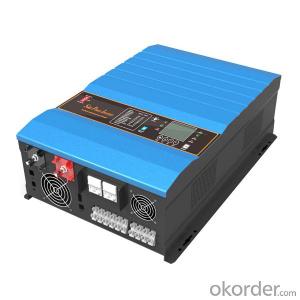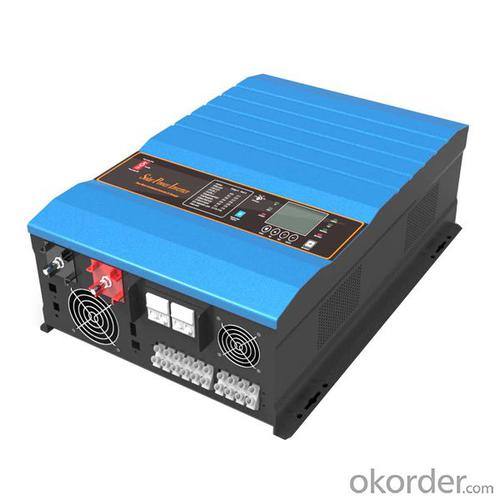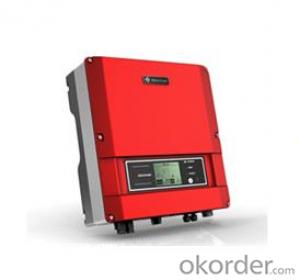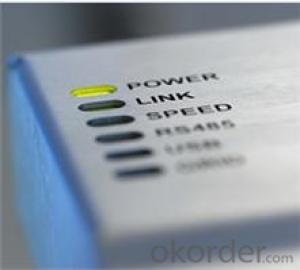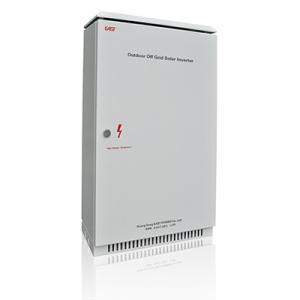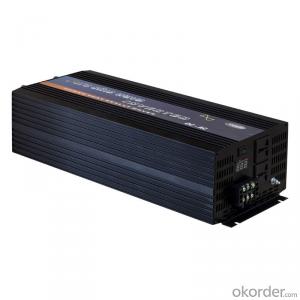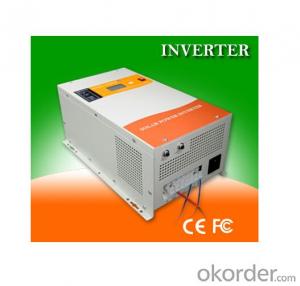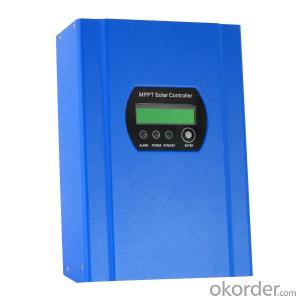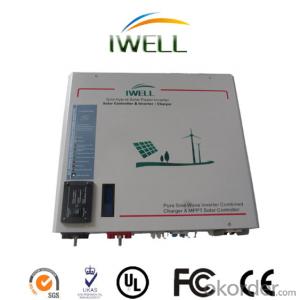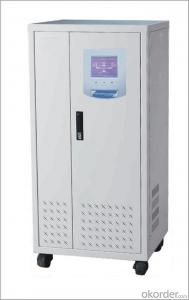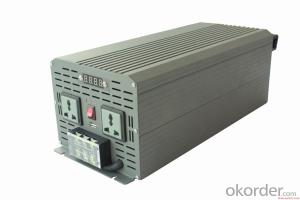20 Kw Pure Sine Wave Inverter with 30A Solar Charger Controller Hot Selling Excellent Quality PV 2000
- Loading Port:
- China main port
- Payment Terms:
- TT OR LC
- Min Order Qty:
- 100 pc
- Supply Capability:
- 10000 pc/month
OKorder Service Pledge
OKorder Financial Service
You Might Also Like
Features
.Power range 1kw-112kw
.12/24v/48v input optional
.Powerful Charge Rate Up to 100Amp
.Inbuilt pure copper transformer
.Pure sine wave output
.LED+LCD display
.MPPT solar charge controller 40A 45A 60A
.50/60HZ automatic sensing
.RS232 with free CD
.Battery priority function
.DC Start & Automatic Self-Diagnostic Function
.High Efficiency Design & “Power Saving Mode” to Conserve Energy
Specifications
| Model
| 1.0KW | 1.5KW | 2.0KW | 3.0KW | 4.0KW | 5.0KW | 6.0KW | 8.0KW | 10.0KW | 12.0KW | |
| Inverter output | Continuous output power | 1.0KW | 1.5KW | 2.0KW | 3.0KW | 4.0KW | 5.0KW | 6.0KW | 8.0KW | 10.0KW | 12.0KW |
| Surge rating (20ms) | 3.0KW | 4.5KW | 6.0KW | 9.0KW | 12.0KW | 15.0KW | 18.0KW | 24.0KW | 30.0KW | 36.0KW | |
| Output waveform | Pure sine wave/ same as input (bypass mode) | ||||||||||
| Nominal efficiency | >88% (peak) | ||||||||||
| Line mode efficiency | >95% | ||||||||||
| Power factor | 0.9-1.0 | ||||||||||
| Nominal output voltage RMS | 100-110-120VAC/220-230-240VAC | ||||||||||
| Output voltage regulation | ±10% RMS | ||||||||||
| Output frequency | 50Hz ± 0.3Hz / 60Hz ± 0.3Hz | ||||||||||
| Short circuit protection | Yes (1sec after fault) | ||||||||||
| Typical transfer time | 10ms (max) | ||||||||||
| THD | < 10% | ||||||||||
| DC input | Nominal input voltage | 12.0VDC / 24.0VDC / 48.0VDC | 24.0VDC /48.0VDC | 48.0VDC | |||||||
| Minimum start voltage | 10.0VDC /10.5VDC for12VDC mode | *2 for 24VDC, *4 for 48VDC | |||||||||
| Low battery alarm | 10.5VDC /11.0VDC for12VDC mode | ||||||||||
| Low battery trip | 10.0VDC /10.5VDC for12VDC mode | ||||||||||
| High voltage alarm | 16.0VDC for12VDC mode | ||||||||||
| Low battery voltage recover | 15.5VDC for12VDC mode | ||||||||||
| Idle consumption-search mode | <25W when power saver on. (refer to table) | ||||||||||
| Charger | Output voltage | Depends on battery type (refer to table 2.5.2) | |||||||||
| Charger breaker rating | 10A | 15A | 20A | 20A | 20A | 30A | 30A | 40A | 40A | 40A | |
| Max charge power rate | 1/3 Rating power (refer to table 2.5.3) | ||||||||||
| Battery initial voltage for start | 10-15.7VDC for 12VDC mode | *2 for 24VDC, *4 for 48VDC | |||||||||
| Over charge protection S.D. | 15.7VDC for 12VDC mode | ||||||||||
| BTS | Battery temperature sensor (optional) | Yes (refer to the table) Variances in charging voltage & S.D. voltage base on the battery temperature. | |||||||||
| Bypass & protection | Input voltage waveform | Sine wave (grid or generator) | |||||||||
| Nominal voltage | 110VAC | 120VAC | 220VAC | 230VAC | 230VAC | ||||||
| Max input AC voltage | 150VAC for 120VAC LV mode; 300VAC for 230VAC HV mode. | ||||||||||
| Nominal input frequency | 50Hz or 60Hz | ||||||||||
| Low freq trip | 47 ± 0.3Hz for 50Hz; 57 ± 0.3Hz for 60Hz | ||||||||||
| High freq trip | 55 ± 0.3Hz for 50Hz; 65 ± 0.3Hz for 60Hz | ||||||||||
| Overload protection (SMPS load) | Circuit breaker | ||||||||||
| Output short circuit protection | Circuit breaker | ||||||||||
| Bypass breaker rating | 10 | 15 | 20 | 30 | 40 | 40 | 40 | 50 | 63 | 63 | |
| Transfer switch rating | 30Amp for UL & TUV | 40Amp for UL | 80Amp for UL | ||||||||
| Bypass without battery connected | Yes (optional) | ||||||||||
| Max bypass current | 30Amp | 40Amp | 80Amp | ||||||||
| Solar charger (optional) | Rated voltage | 12.0VDC / 24.0VDC / 48.0VDC | |||||||||
| Solar input voltage range | 15-30VDC / 30-55VDC / 55-100VDC | ||||||||||
| Rated charge current | 40-60A | ||||||||||
| Rated output current | 15A | ||||||||||
| Self consumption | <10mA | ||||||||||
| Bulk charge (default) | 14.5VDC for12VDC mode | *2 for 24VDC, *4 for 48VDC | |||||||||
| Floating charge (default) | 13.5VDC for12VDC mode | ||||||||||
| Equalization charge (default) | 14.0VDC for12VDC mode | ||||||||||
| Over charge disconnection | 14.8VDC for12VDC mode | ||||||||||
| Over charge recovery | 13.6VDC for12VDC mode | ||||||||||
| Over discharge disconnection | 10.8VDC for12VDC mode | ||||||||||
| Over discharge reconnection | 12.3VDC for12VDC mode | ||||||||||
| Temperature compensation | -13.2mVDC/℃ for12VDC mode | ||||||||||
| Ambient temperature | 0-40℃ (full load) 40-60℃ (derating) | ||||||||||
| Mechanical specifications | Mounting | Wall mount | |||||||||
| Inverter dimensions (L*W*H) | 388*415*200mm | 488*415*200mm | 588*415*200mm | ||||||||
| Inverter weight (solar chg) KG | 21+2.5 | 22+2.5 | 23+2.5 | 27+2.5 | 38+2.5 | 48+2.5 | 49+2.5 | 60+2.5 | 66+2.5 | 70+2.5 | |
| Shipping dimensions (L*W*H) | 550*520*310mm | 650*520*310mm | 750+520+310mm | ||||||||
| Shipping weight (solar chg) KG | 23+2.5 | 24+2.5 | 25+2.5 | 29+2.5 | 40+2.5 | 50+2.5 | 51+2.5 | 62+2.5 | 68+2.5 | 72+2.5 | |
| Display | LED+LCD | ||||||||||
| Standard warranty | 1 year | ||||||||||
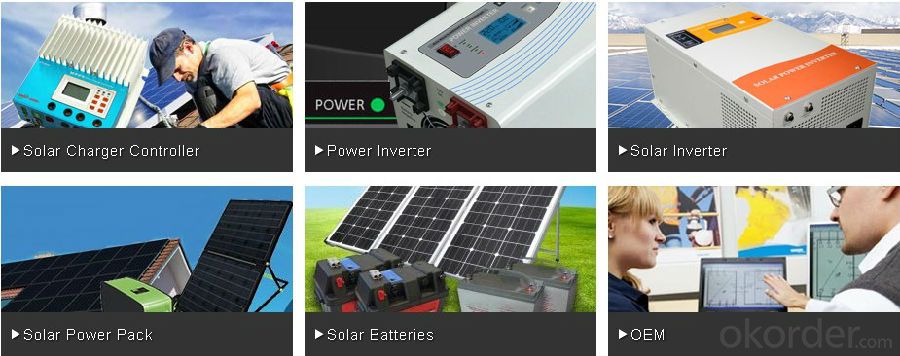
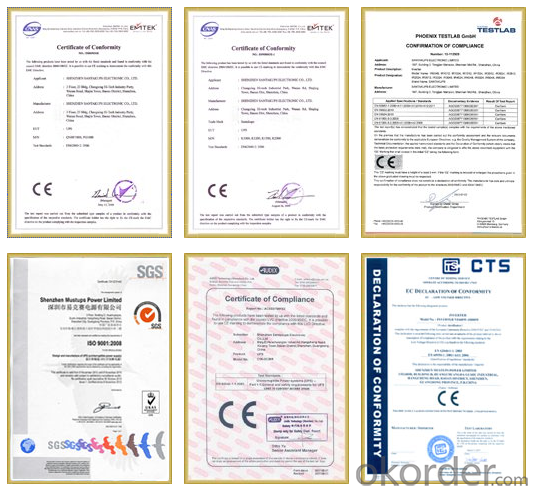
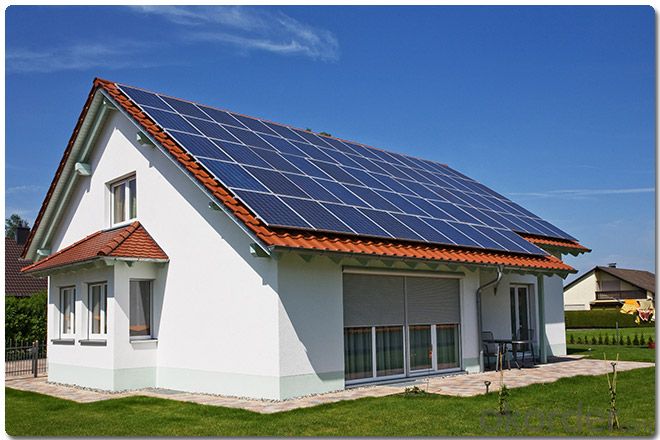
Warranty
provides a 1~3 year limited warranty (“Warranty”) against defects in materials and workmanship for its Uninterruptible power supply, Power inverter/chargers, Solar charge controllers, Battery Products (“Product”).
The term of this Warranty begins on the Product(s) initial purchase date, or the date of receipt of the Product(s) by the end user, whichever is later. This must be indicated on the invoice, bill of sale, and/or warranty registration card submitted to MUST-Solar. This Warranty applies to the original MUST-Solar Product purchaser, and is transferable only if the Product remains installed in the original use location.
FAQ
1. How fast will my system respond to a power outage?
Our solar inverters typically transfer to battery power in less than 16 milliseconds (less than 1/50th of a second).
2. What kind of batteries do the systems include?
Our solar backup electric systems use special high-quality electric storage batteries.
3. How do I install my system?
A solar backup inverter is connected to a home electric system , we will supply detailed installation manual and videos for our customers .
- Q: How do you calculate the efficiency loss due to temperature for a solar inverter?
- To calculate the efficiency loss due to temperature for a solar inverter, you need to consider the temperature coefficient of the inverter. The temperature coefficient represents the percentage decrease in efficiency for every degree Celsius increase in temperature. By multiplying the temperature coefficient with the temperature difference from the inverter's rated temperature, you can estimate the efficiency loss. For example, if the temperature coefficient is 0.5% per degree Celsius and the temperature increase is 10 degrees Celsius, the efficiency loss would be 5%.
- Q: Can a solar inverter be used with batteries?
- Yes, a solar inverter can be used with batteries. In fact, many solar energy systems use a solar inverter to convert the DC (direct current) power generated by solar panels into AC (alternating current) power that can be used by household appliances. By integrating batteries into the system, excess solar energy can be stored for later use during periods of low sunlight or at night, providing a reliable and continuous power supply.
- Q: Can a solar inverter be used with solar-powered desalination systems?
- Yes, a solar inverter can be used with solar-powered desalination systems. Solar inverters are essential components in solar power systems as they convert the direct current (DC) electricity generated by solar panels into alternating current (AC) electricity that can be used to power various devices, including desalination systems. By connecting the solar panels to a solar inverter, the generated solar energy can be efficiently utilized to power the desalination system, making it a sustainable and environmentally friendly solution for producing fresh water.
- Q: Can a solar inverter be used with different types of solar panels (monocrystalline, polycrystalline, thin-film)?
- Yes, a solar inverter can be used with different types of solar panels such as monocrystalline, polycrystalline, and thin-film. Solar inverters are designed to convert the direct current (DC) produced by solar panels into alternating current (AC) suitable for use in household or commercial electrical systems. As long as the solar panels generate DC power within the operating range of the inverter, they can be compatible regardless of the technology used.
- Q: What is the maximum DC input current of a solar inverter?
- The maximum DC input current of a solar inverter depends on its specifications and design. It can vary greatly depending on the model and capacity of the inverter. It is essential to refer to the manufacturer's documentation or specifications to determine the specific maximum DC input current for a particular solar inverter.
- Q: What is the difference between low voltage grid connection and medium voltage grid connection?
- When the power grid failure or disturbance caused by the power supply and network voltage drop, in the voltage drop range, the power group can be uninterrupted through the inverter and network operation.
- Q: How does a solar inverter handle temperature variations?
- A solar inverter is designed to handle temperature variations by incorporating advanced thermal management systems. These systems ensure that the inverter operates within a specified temperature range, typically between -25 to 60 degrees Celsius. The inverter uses internal fans, heat sinks, and sometimes liquid cooling mechanisms to dissipate heat generated during operation. Additionally, the inverter may have temperature sensors that monitor the internal and external temperatures, allowing it to adjust its performance and efficiency accordingly. This temperature management enables the solar inverter to operate optimally and maintain its reliability even in extreme temperature conditions.
- Q: How does a solar inverter handle voltage and frequency regulation?
- A solar inverter handles voltage and frequency regulation by converting the direct current (DC) generated by solar panels into alternating current (AC) that matches the utility grid's voltage and frequency. It achieves voltage regulation by constantly monitoring the grid voltage and adjusting the inverter's power output accordingly. Frequency regulation is achieved by synchronizing the inverter's output frequency with the grid frequency, ensuring a stable and consistent power supply.
- Q: In a photovoltaic grid-connected project, the role of the inverter is to convert the voltage into AC 220V or 380V for the grid, since the transformer will raise the voltage again
- Self-use, do you mean off-grid system? Or else? Europe and Sweden side of the grid project electricity situation is also self-use? If not for their own use or spontaneous use is not used up, sent to other places electricity, you need a transformer?
- Q: Can a solar inverter work in low light conditions?
- Yes, a solar inverter can work in low light conditions. While the output power of a solar inverter may decrease in low light conditions, it is still capable of converting the available sunlight into usable electricity. The performance may vary depending on the specific model and technology used, but modern solar inverters are designed to work efficiently even in low light situations.
Send your message to us
20 Kw Pure Sine Wave Inverter with 30A Solar Charger Controller Hot Selling Excellent Quality PV 2000
- Loading Port:
- China main port
- Payment Terms:
- TT OR LC
- Min Order Qty:
- 100 pc
- Supply Capability:
- 10000 pc/month
OKorder Service Pledge
OKorder Financial Service
Similar products
Hot products
Hot Searches
Related keywords
